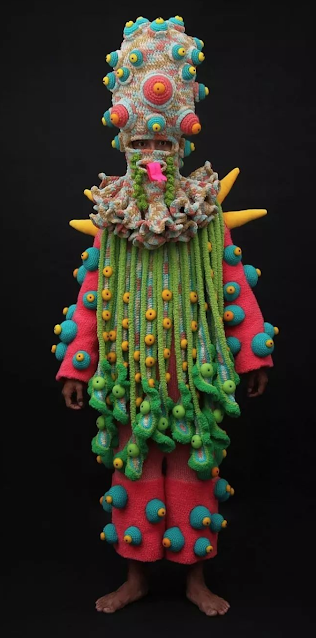THE CATEDRAL OF THE SEMILLAS
The
suggestive name of this pavilion comes from the 60,000 optical fibers
that wrap it, each of which stores inside various varieties of seeds
from Britain's Millennium Seed Bank.
Of an iconic character, it has its origin in that London is by size the
greenest city in the world and has also been the pioneer in having a
public park and a botanical institution, the Royal Botanic Gardens,
whose mission is to gather by 2020 at least 25% of the seeds of all
botanical species in the world.
The
pavilion has 6 levels and 20 meters high. Its steel and wood structure
was drilled to be crossed by the 60 000 square optical fibres, 20 mm2 of
section, coated with an aluminum case. This metal allowed the LED to
be refrigerated from the fiber. The LED does not generate heat forward
in the direction of the light beam, but it does backwards. The wood
drills were performed with great geometric accuracy, to ensure the
precise placement of the aluminum cases, rainwater stagna, and their
fiber optics.

The
3D modeling, introduced into a milling machine, controlled by computer
was necessary. Each fiber had a length of 7.5 meters and, in addition to
playing an aesthetic role, they were also in charge of managing the
light of the pavilion. During the day each of these translucent fibers
drove the light into the inner space. During the night the process was
reverse, as the same fibers were in charge of illuminating the exterior
through a variety of colors depending on the direction the fibers took
with the wind.

The
botanical vocation of the architects of Heatherwick prompted to imitate
that bad sheerb, known in Spain as Lion's Tooth. The look of Seed
Cathedral is entirely reminiscent of the Lion's Tooth flower, with its
transparent acrylic rods extruded as cypselas. In the same segment there
is an LED embedded in the fiber, which illuminates it in the two
directions of the axis, in and out. The white light (5770ko) is achieved
with InGaN and a layer of phosphorus. The LED fiber Optic illuminator
used is a product already developed for surgery and microscopic
techniques, which concentrates light within the fiber using an
appropriate optical system, of negligible size. Heatherwick successfully
adapted it to the architecture and got a LED of 1Lumen of luminous
flux, with 2 beams of light. Each rod, on the inside of the pavilion,
at its end of square section, exhibited one or more seeds.

The
visitor of the central room perceived that diffuse light of the 60,000
acrylic fibers, a necessary semi-dark, to observe the seeds illuminated
from the outside. The seed exhibitor matrix fully occupied the space,
the same as the walls as the vault.
Inside
the Seed Cathedral there was no lighting system, only 60,000 optical
fibers provided light. By day only the Hall is illuminated, from the
south side, the sunny. If there were clouds, the light level fluctuated.
At night, with LED lighting, the light intensity was uniform throughout
the womb. Of course, the lighting was poor, but the intention of the
designer Heatherwick was to create an atmosphere of reverence, to
envelop this formidable collection of world botanical resources, a space
also silent.
Outside,
when the wind was blowing, the building and its 7.5m-long cypselas
moved smoothly, creating the dynamic effect of an almost alive organic
building.
In
the words of Heatherwick Studio, the design had three main objectives:
the first, to be a pavilion whose architecture is a direct manifestation
of the contents it presents; the second, to provide a significant open
public space in which visitors can relax; and the third, to find a
simple idea powerful enough that is kept with your head high in the
middle of the bullshit of the hundreds of pavilions of the competition.
https://maryaninteriordesign.blogspot.com/2019/07/la-catedral-de-las-semillas.html?spref=bl
👇👇👇we loved this post from 2019
Maryan Interior Design: LA CATEDRAL DE LAS SEMILLAs

















Comments
Post a Comment
send me your idea!